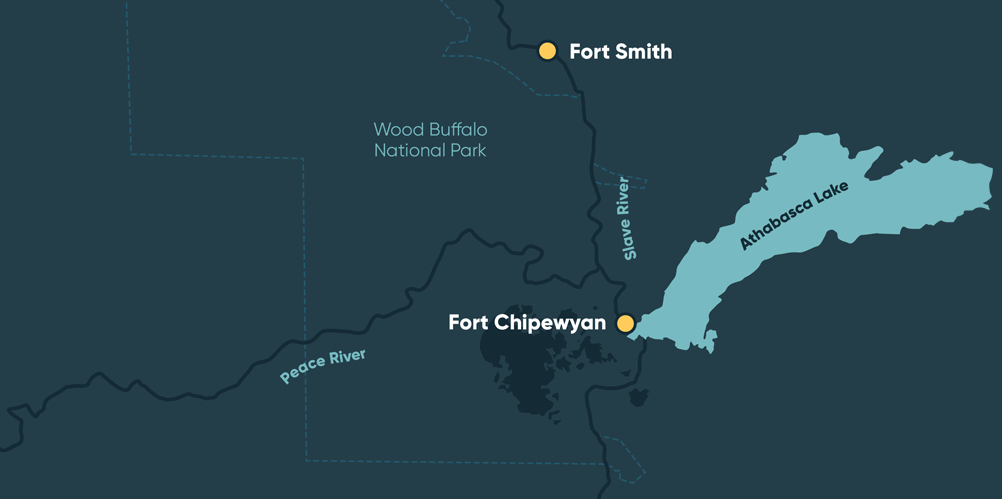Interesting Facts
The history of our name
In honour of Chief Mikisew (Justin Marten), the first Chief signatory to the Treaty 8 adhesion on July 13, 1899, the “Cree Indian Band” was re-named the “Mikisew Cree First Nation” in 1991 as we sought our own autonomy. We wanted a name that was meaningful and honourable to show appreciation and to pay our respects to the late Chief Mikisew.
Treaty 8 signing
In 1899, the Mikisew Cree First Nation was an adhesion signatory with Canada to Treaty 8. In 1986, Mikisew signed a Treaty Land Entitlement that created several reserves in and around the Fort Chipewyan area and into the area north of Lake Athabasca.
The Significance
of the Eagle
The eagle is an important element of the Mikisew logo. It is highly regarded by members as strong and powerful, and signifies love and virtue.

Lake Athabasca
Lake Athabasca, the eighth-largest natural lake in Canada, flows through Wood Buffalo National Park on its way down the Mackenzie River and to the Arctic. The Athabasca Delta, which is at the centre of Mikisew’s traditional lands, is a unique and cherished international ecosystem that sustains us. When the fur trade came west and established a trading fort in this area, the Mikisew Cree were among those who traded furs.
Mikisew Ecoregions, Geography and Habitat
Mikisew lands are in the Tazin Lake Upland ecoregion, extending north of Lake Athabasca, as well as the Athabasca Plain ecoregion. The Tazin Lake region is rugged and, in some areas, has soil that is frozen year-round. This ecoregion, full of trembling aspen, balsam poplar, white spruce, balsam fir and other species, has many small lakes and streams that eventually flow into Great Slave Lake. Here you can see black bear, moose, wolf, woodland caribou, beaver, muskrat, snowshoe hare and spruce grouse.
The Athabasca Plain ecoregion stretches south from Lake Athabasca, and features bedrock, sand dunes and wetlands that support stands of jack pine, paper birch, white spruce, black spruce, balsam fir and trembling aspen. Wildlife here includes moose, black bear, woodland caribou, lynx, wolf, beaver, muskrat, snowshoe hare, and many birds such as geese, pelicans and grouse.










